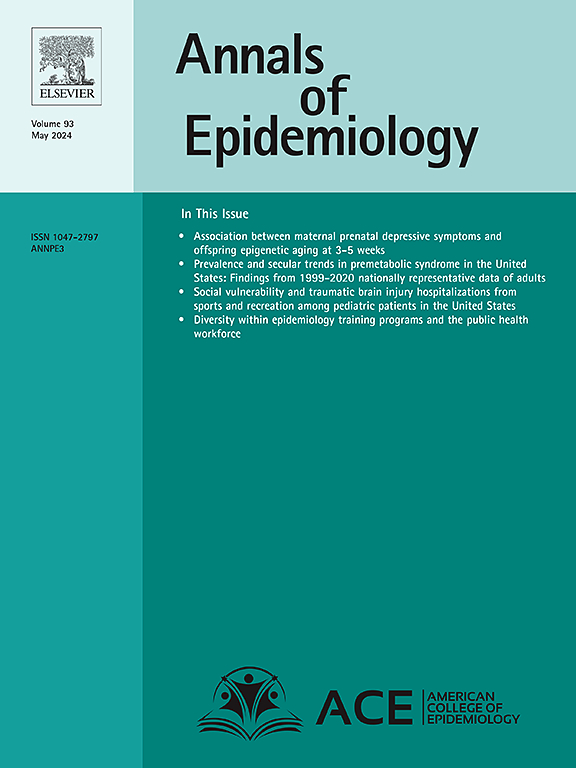School neighborhood deprivation is associated with a higher prevalence of hypertension
IF 3.3
3区 医学
Q1 PUBLIC, ENVIRONMENTAL & OCCUPATIONAL HEALTH
引用次数: 0
Abstract
Objectives
To examine the association between socioeconomic characteristics of school neighborhoods and the prevalence of hypertension in adolescents.
Study design
We performed a secondary data analysis of over 21,000 adolescents who participated in a school BP surveillance program between 2000 and 2017. BP status was confirmed by BP measurements on up to 3 occasions to diagnose sustained hypertension according to standard pediatric hypertension guidelines. We assessed school neighborhood socioeconomic status (SES) via the area deprivation index (ADI), a composite measure of area-level socioeconomic deprivation and categorized into quartiles. Q1 represented schools in neighborhoods with the least social deprivation while Q4 represented neighborhood with the most socioeconomic deprivation. We performed a cross-sectional analysis using both univariate and multivariable regression analyses.
Results
Of 21,392 children included in our analysis, the prevalence of sustained hypertension was 2.6 %. Hispanics and African Americans were overrepresented in the schools in more deprived neighborhoods. The highest sustained hypertension rate was observed among students attending Q3 (5.5 %) and Q4 (4.2 %) schools compared to Q1 (2.7 %) and Q2 (2.0 %) schools (p < 0.001). Multivariable regression analysis showed that being male, obese, and attending school in a disadvantaged neighborhood were significantly associated with an increased prevalence of hypertension.
Conclusions
Our findings suggest that school neighborhood deprivation measured by ADI may be a risk factor for hypertension and may contribute to the racial/ ethnic disparities observed in hypertension prevalence in adolescents.
学校邻里剥夺与高血压高患病率相关
目的:探讨学校社区的社会经济特征与青少年高血压患病率之间的关系。研究设计:我们对2000年至2017年间参加学校血压监测项目的21,000多名青少年进行了二次数据分析。根据标准的儿科高血压指南,通过血压测量确认血压状态,以诊断持续高血压,最多3次。我们通过区域剥夺指数(ADI)来评估学校社区的社会经济地位(SES),这是一种区域级社会经济剥夺的综合衡量标准,并分为四分位数。Q1代表社会经济剥夺最少的社区的学校,Q4代表社会经济剥夺最严重的社区的学校。我们使用单变量和多变量回归分析进行了横断面分析。结果:在我们分析的21392名儿童中,持续高血压的患病率为2.6%。拉美裔和非裔美国人在贫困社区的学校中比例过高。与Q1(2.7%)和Q2(2.0%)相比,Q3(5.5%)和Q4(4.2%)学校的学生持续高血压率最高(p < 0.001)。多变量回归分析显示,男性、肥胖和在弱势社区上学与高血压患病率增加显著相关。结论:我们的研究结果表明,ADI测量的学校邻里剥夺可能是高血压的一个危险因素,并可能导致青少年高血压患病率的种族/民族差异。
本文章由计算机程序翻译,如有差异,请以英文原文为准。
求助全文
约1分钟内获得全文
求助全文
来源期刊

Annals of Epidemiology
医学-公共卫生、环境卫生与职业卫生
CiteScore
7.40
自引率
1.80%
发文量
207
审稿时长
59 days
期刊介绍:
The journal emphasizes the application of epidemiologic methods to issues that affect the distribution and determinants of human illness in diverse contexts. Its primary focus is on chronic and acute conditions of diverse etiologies and of major importance to clinical medicine, public health, and health care delivery.
 求助内容:
求助内容: 应助结果提醒方式:
应助结果提醒方式:


